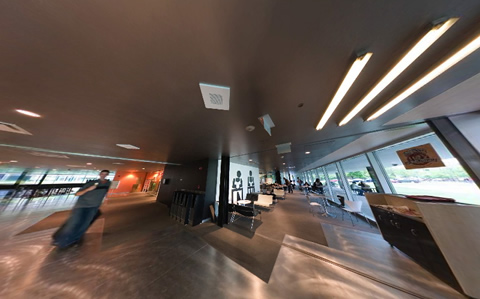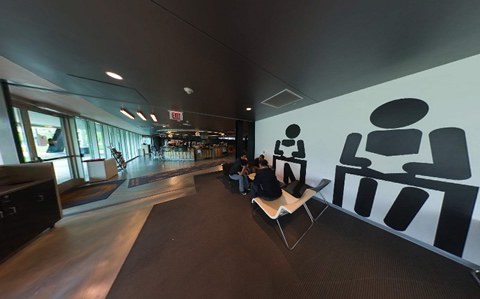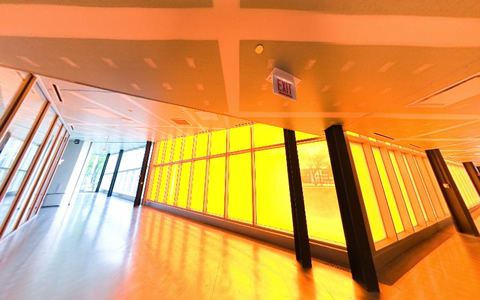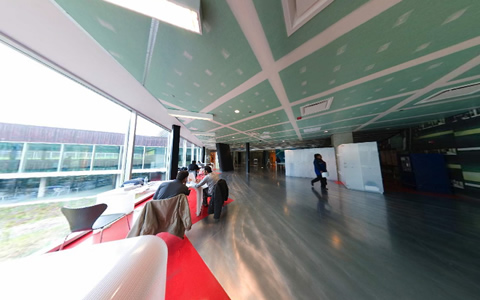At the Domus website, as part of the special edition Domus d'Autore, guest edited by Rem Koolhaas and his OMA/AMO collective, you can access a series of Shockwave walkthroughs and Quicktime 3D panoramas of the 4 projects covered in the print book - the Dutch Embassy in Berlin, the IIT Campus Center, the Seattle Public Library and the Casa de Musica in Porto. You can access the files for the McCormick Tribune Campus Center building at IIT for free, but you'll have to pay EUR10 for the others.
The Quicktime panoramas give a good sense of the spaces, and the dense convergence of shapes that characterise these buiildings. But what fascinates me with these QT images is that you can actually zoom the perspective out to acheive impossible views, diverging 2-point perspective, a hyper-perspective if you will.




This hyper-perspective adds an even greater sense of dynamism, and should in itself be a valid design tool. It is reminiscent of early Hadid renderings, where the impossible viewpoints prefigure the dynamic of the built form. Where does the distorted representation end, and the building begin?
Director at Zaha Hadid Architects, Patrik Schumacher, summarised it thus in his book Digital Hadid, Landscapes in Motion:
"One of Hadid's most audacious moves was to translate the dynamism and fluidity of her calligraphic hand directly into equally fluid tectonic systems. Another incredible move was the move from isometric and perspective projection to literal distortion of space and from the exploded axonometry to the literal explosion of space into fragment, from the superimposition of various fisheye perspectives to the literal bending and meltdown of space etc."
Later, Schumacher opines:
"perspective distortions allow the orientation of elements to various functional focus points etc. What was once an outrageous violation of logic has become part of strategically deployed repertoire of nuanced spatial organization and articulation."
The hyper-perspective that these 3D Quicktime panoramas offer of the OMA buildings allow new modes of representation, which likewise might inform the spatial and compositional dynamics of future projects, if OMA follow a similar approach.
Previously:
